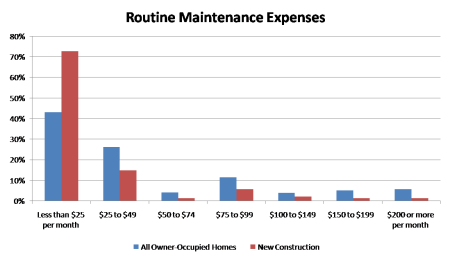
From spalike master baths to super-large kitchens and beautiful outdoor spaces, a range of consumer preferences is driving home design. My newly compiled list of lifestyle and design trends details what consumers want in a home now and in years to come.
• Smaller homes. According to the results of a recent AIA Design Trends Survey, there is a growing interest in smaller home sizes and volumes due to an effort to contain energy costs. The era of the McMansion could be over, and a significantly higher number of architects have reported demand for smaller homes. The key is to create scale and function over size, while creating more financially attainable homes.
• Private outdoor spaces. Almost all homeowners—whether baby boomers, empty nesters, or Gen Y—want less maintenance and more privatized outdoor space to gather and entertain without the neighbors watching. This design trend can be achieved by positioning architecture around the outdoor space or by allowing the outdoor space to pierce architecture, affording more living spaces in the house to be exposed to the outdoor area.
• Better indoor/outdoor connectivity. The use of large floor-to-ceiling windows and sliding doors brings the outdoors into the home experience. These thresholds to the outdoors offer more light and access to private outdoor space, resulting in the interior feeling like it extends beyond the walls.
• Covered outdoor rooms. These outdoor rooms expand the utility of adjoining interior spaces. The rooms become outdoor retreats, providing intimate relaxing spaces, still covered and protected, but open to the outdoors. Often these spaces include a stone fireplace to complete the living room feel.
• Personalization. Whether for a resale or a new home, consumers are looking to find and purchase feature elements that reflect their personal tastes and preferences, from kitchen products and bath fixtures to custom flooring and even the overall layout of the home.
• Super-sized kitchens. In addition to food preparation, the kitchen serves as an entertainment area when guests are present, a conversation area among family members, or even a place for homework or a craft project. Islands and their seating capacity must expand in size, and utility spaces and pantries need to be able to store more packaged foods, which are now purchased in larger boxes and in multiple quantities.
• More seating for media areas. The typical home TV is now a large flat-screen TV capable of everything from games to 3D movies to surfing hundreds of cable channels or the Internet. The increasing TV sizes have created a design need for more wall space and larger seating capability.
• Spalike master baths. The bathtub is not dead, but it often is an afterthought in many designs. For many homeowners, especially women, taking a bath is considered private time and an opportunity to escape. Design the bathroom to look like and feel like a hotel spa to get a woman’s attention.
• Larger garages. Garages provide much more than just storage for cars. They have myriad uses from additional bedrooms, a teenage hangout or band practice room, extra storage, or an exercise room. Creating a larger garage to accommodate more functions is a tremendous value to the consumer.
• Storage. Closets and other storage areas rarely get designed into a home in sufficient quantities and in primary locations. In fact, it seems you can never provide enough storage space—79% of buyers want more storage than home builders are providing. Giving them more gives them a reason to move.
• Home offices. The office and den are trending from a preference to a need, but the typical office location off the home’s entry is not considered an intelligent or practical location. The better location is closer to the main living area of the house—the kitchen hub and family room.
• Grand entries. Buyers are looking for entry design and drama but, over the past 10 to 15 years, we have stacked living spaces over the entries, which has impacted this. Creating volume in these spaces will increase the wow factor and please buyers.
• Dual-use homes. Multigenerational living has become part of our culture. Families are staying together longer for various reasons, economic as well as cultural. Lower-level living suites with their own entrance, living spaces, and kitchenette are becoming more prevalent.
• Technology. New products create a need for a new lifestyle, which revolves around the use of hand-held electronic devices. How can a family room support two laptops and an iPad notebook and multiple smartphones? Are we designing more electric plug capability to accommodate recharging needs? Are master bedrooms able to accommodate a flat-screen TV?
• Dogs. While we design homes for human habitation, don’t forget man’s best friend. Approximately 37% of all U.S. households have a dog. Capture pet-lovers’ hearts by adding practical conveniences such as built-in doggie doors, pet showers, and storage for pet-related items.
Plansource, Inc., www.plansonline.com, is a Tampa, FL based full service residential design firm that remains a portal of information for homebuilders and the homebuilding industry.
Photo copyright Plansource, Inc.
Reprinted from Builder magazine





